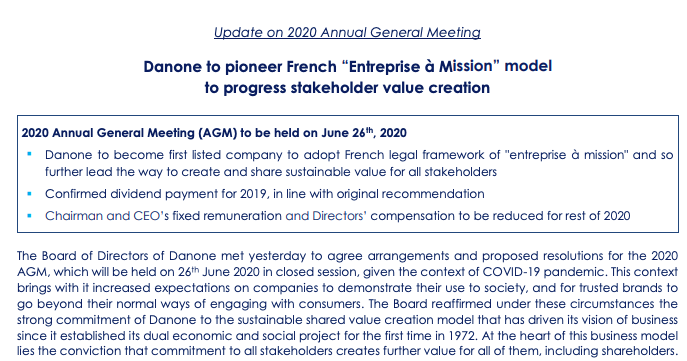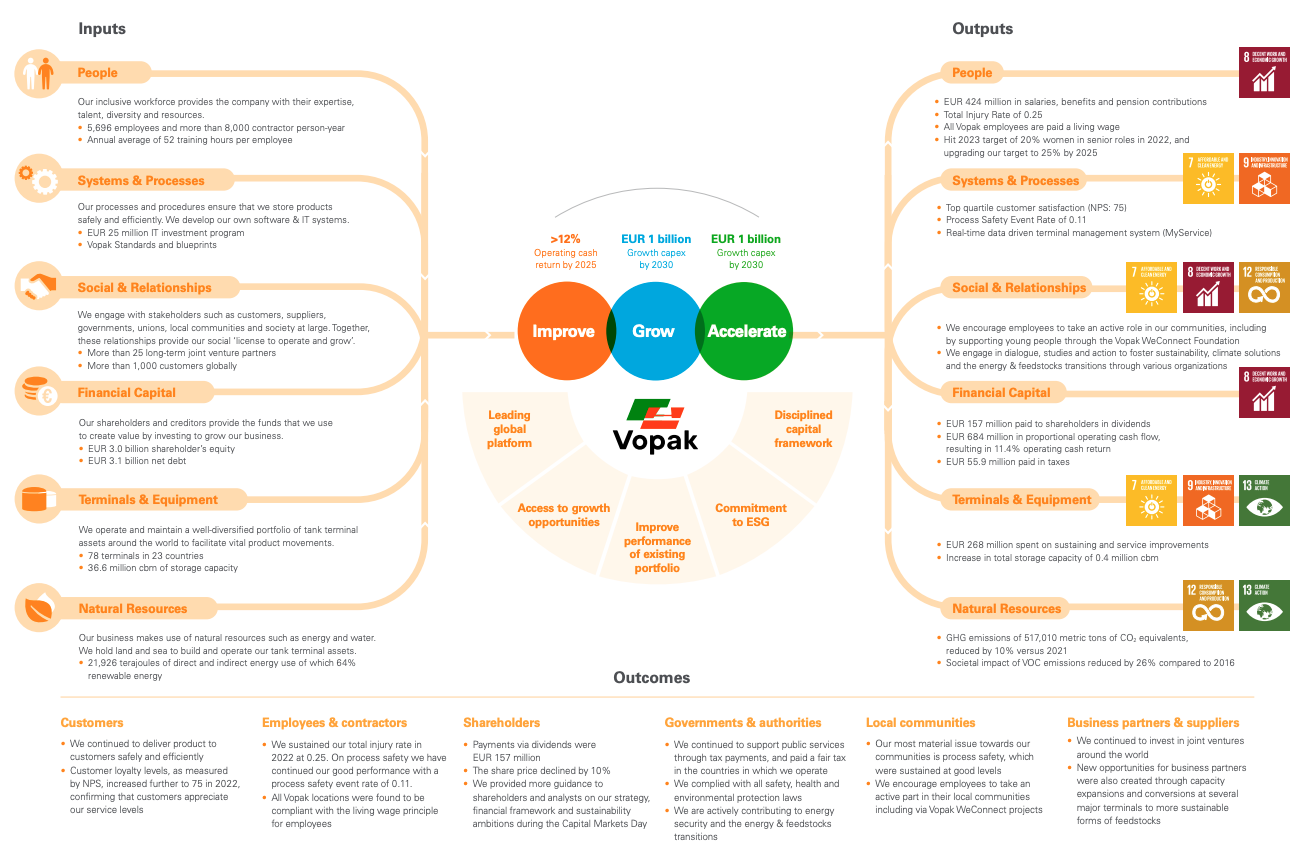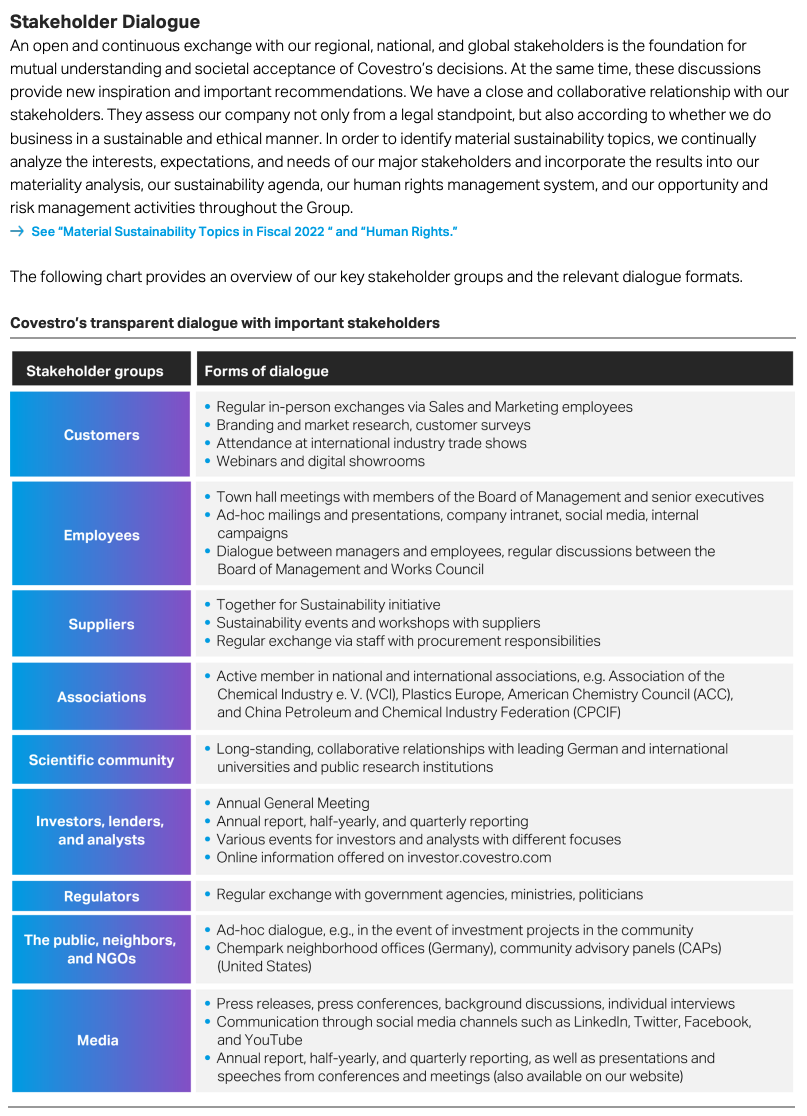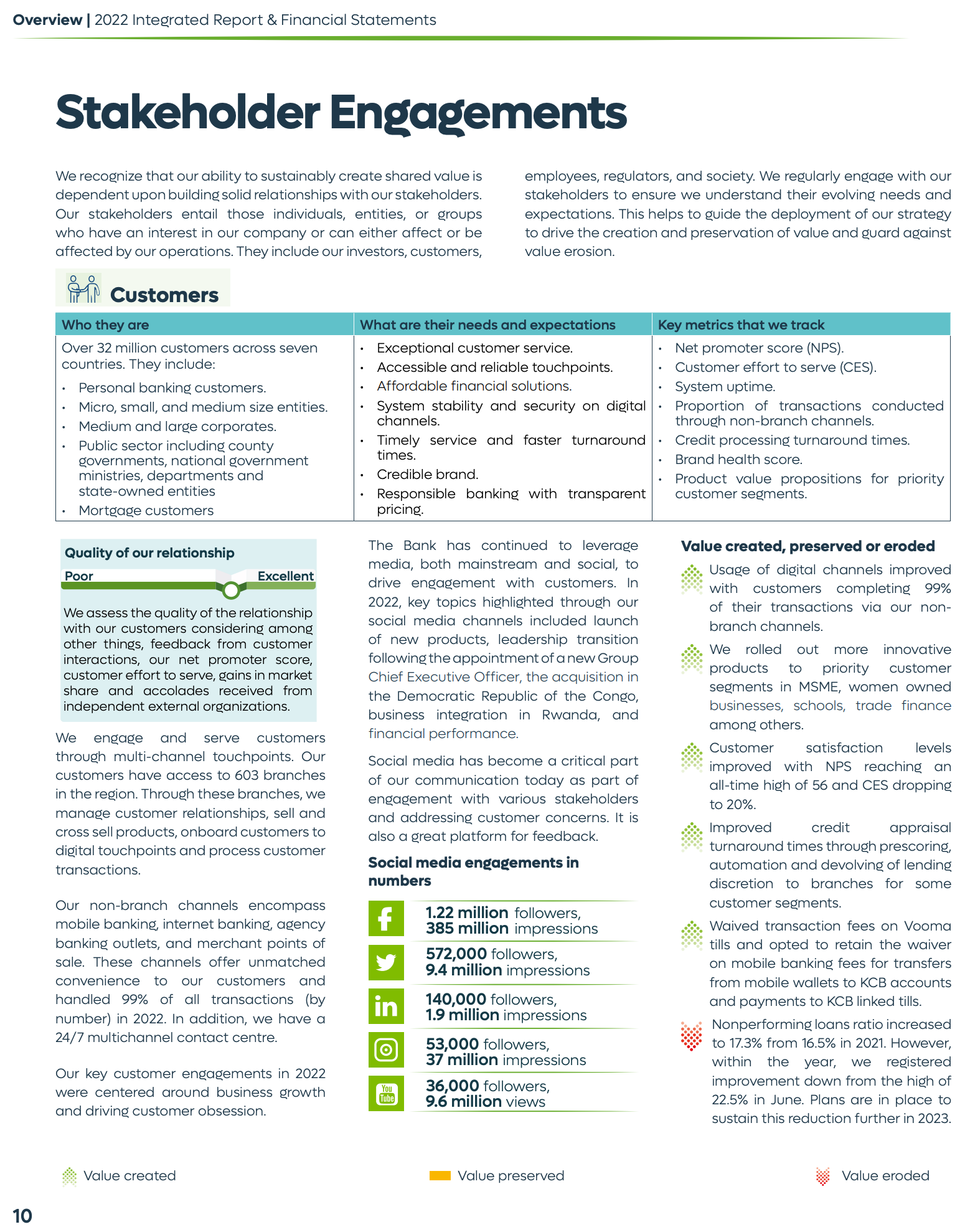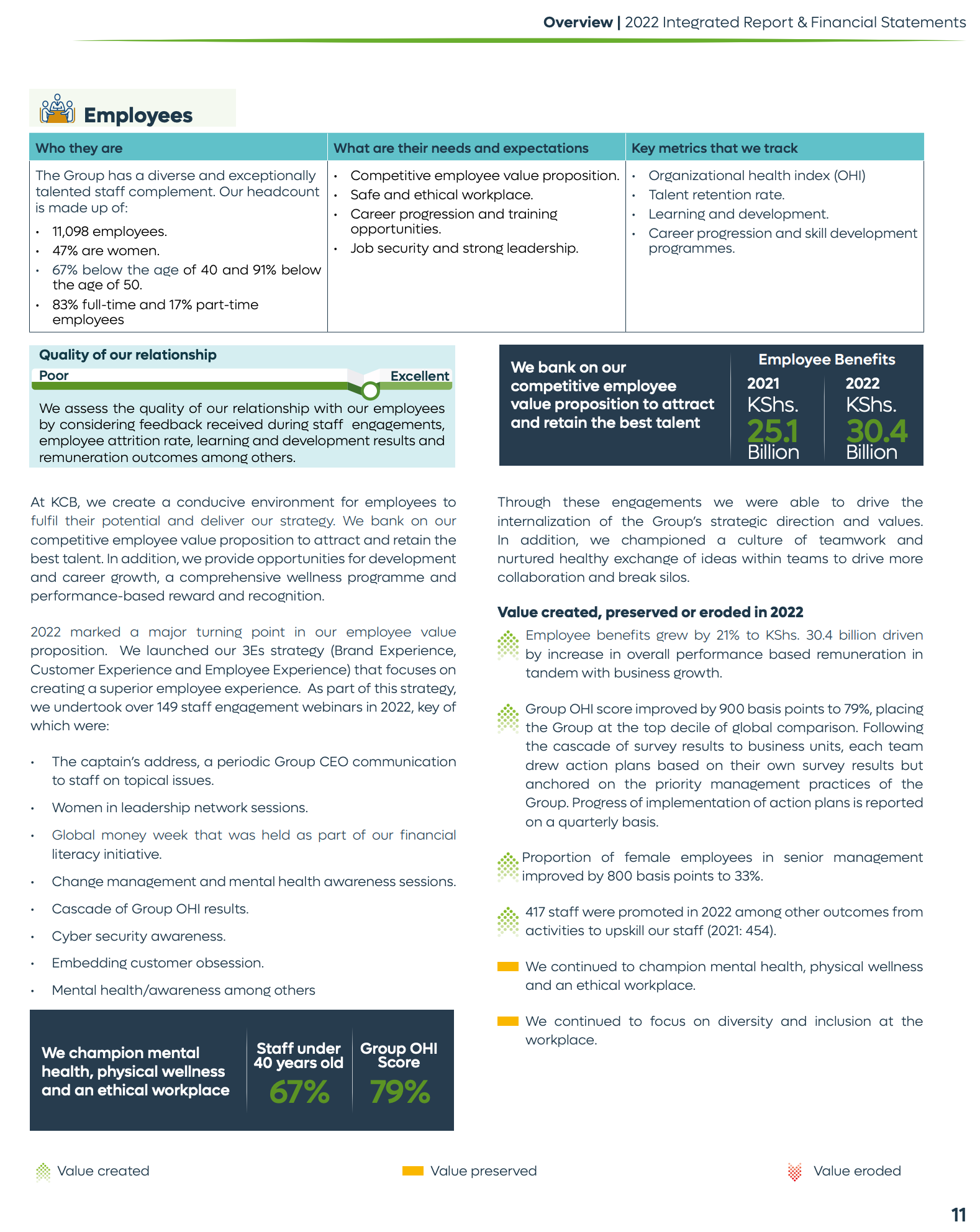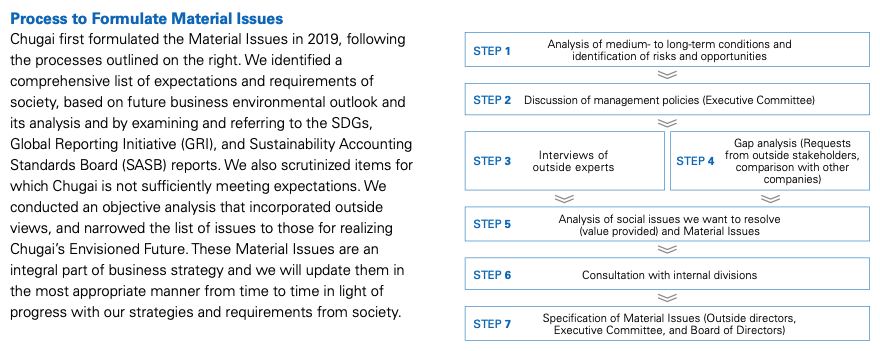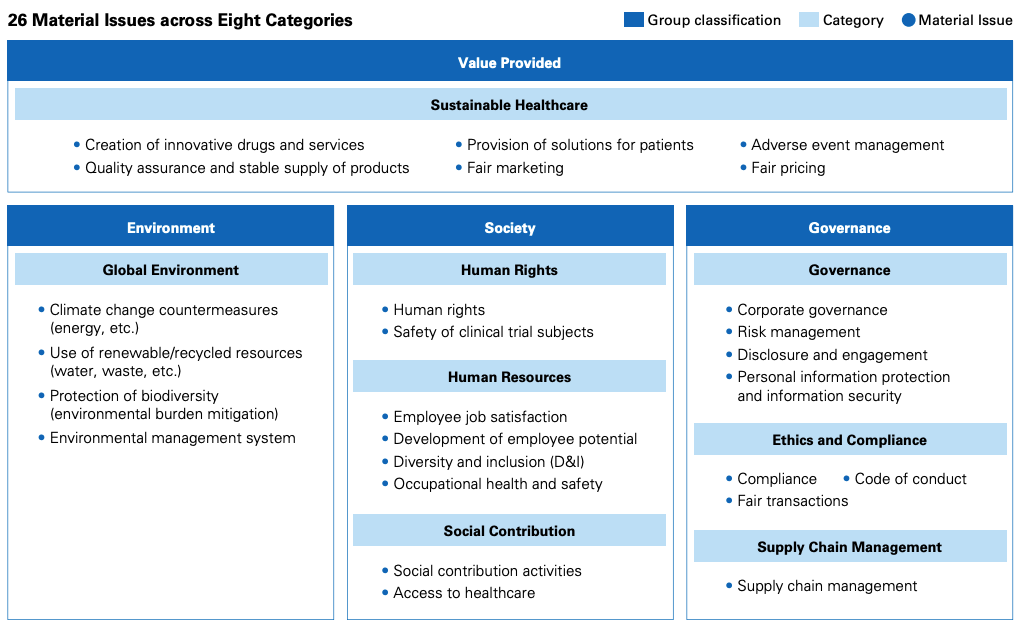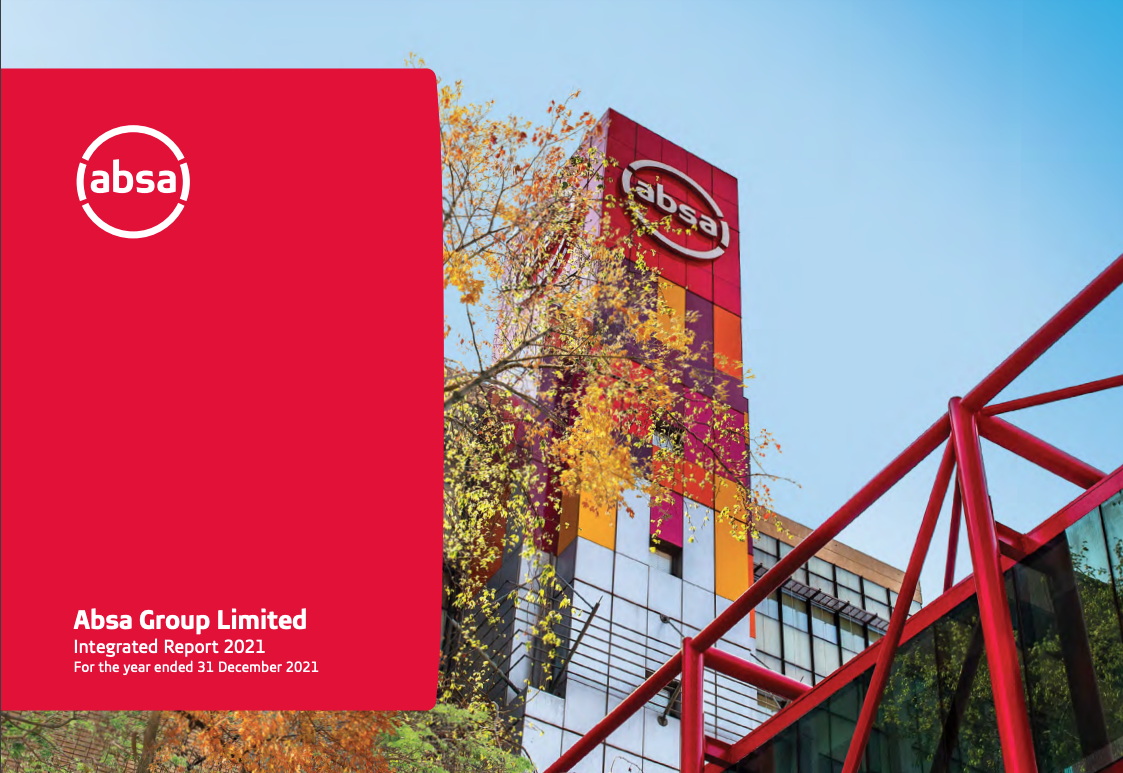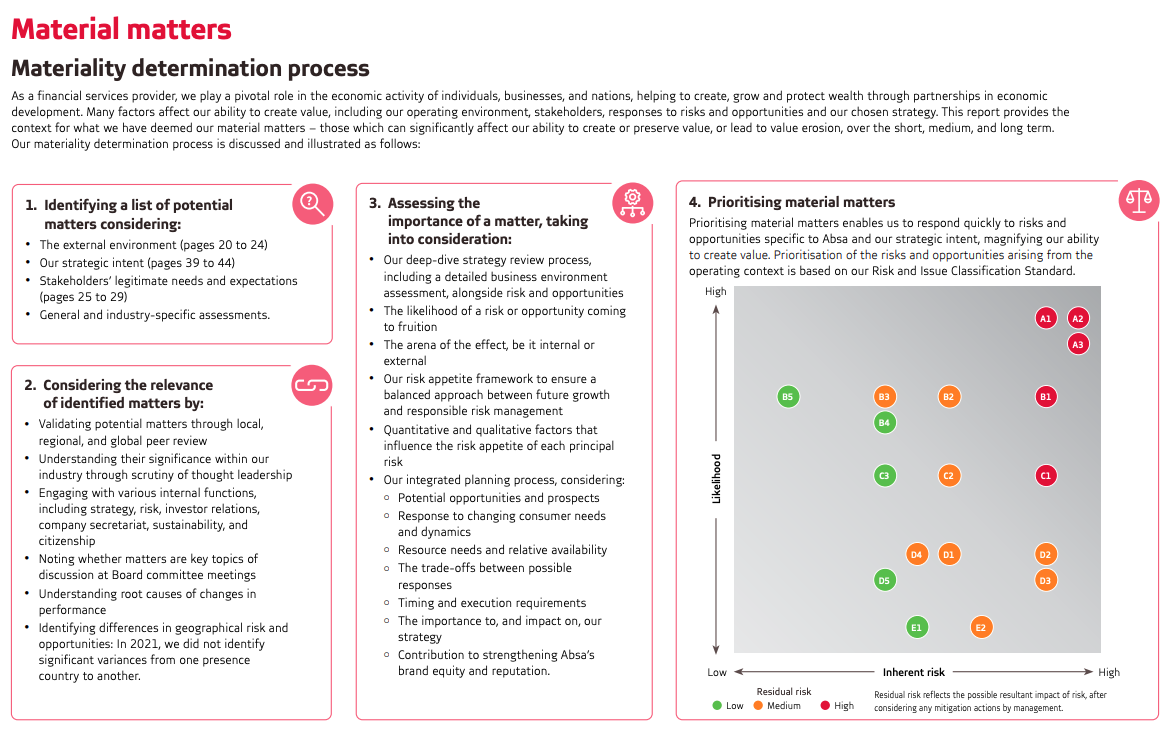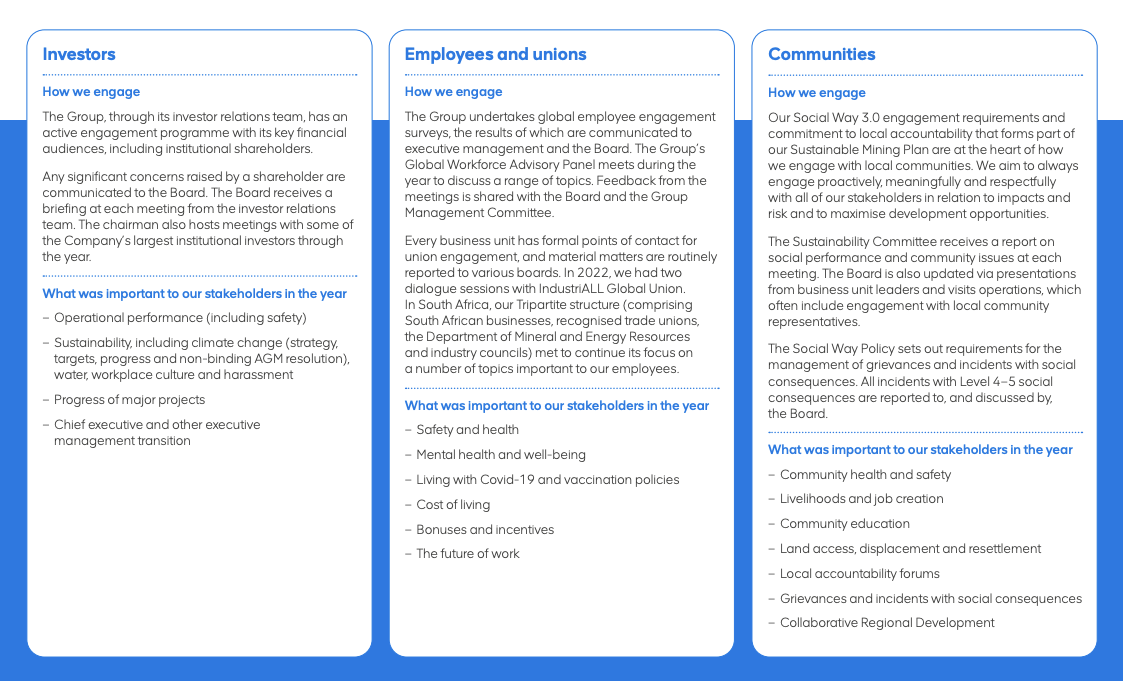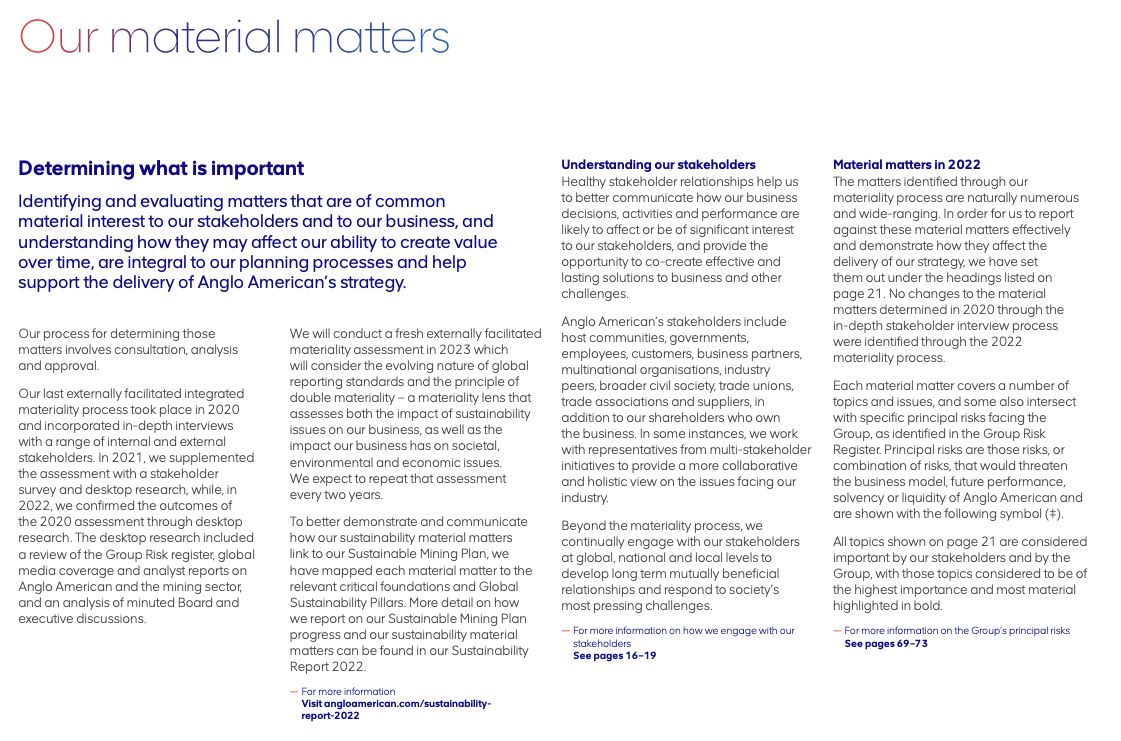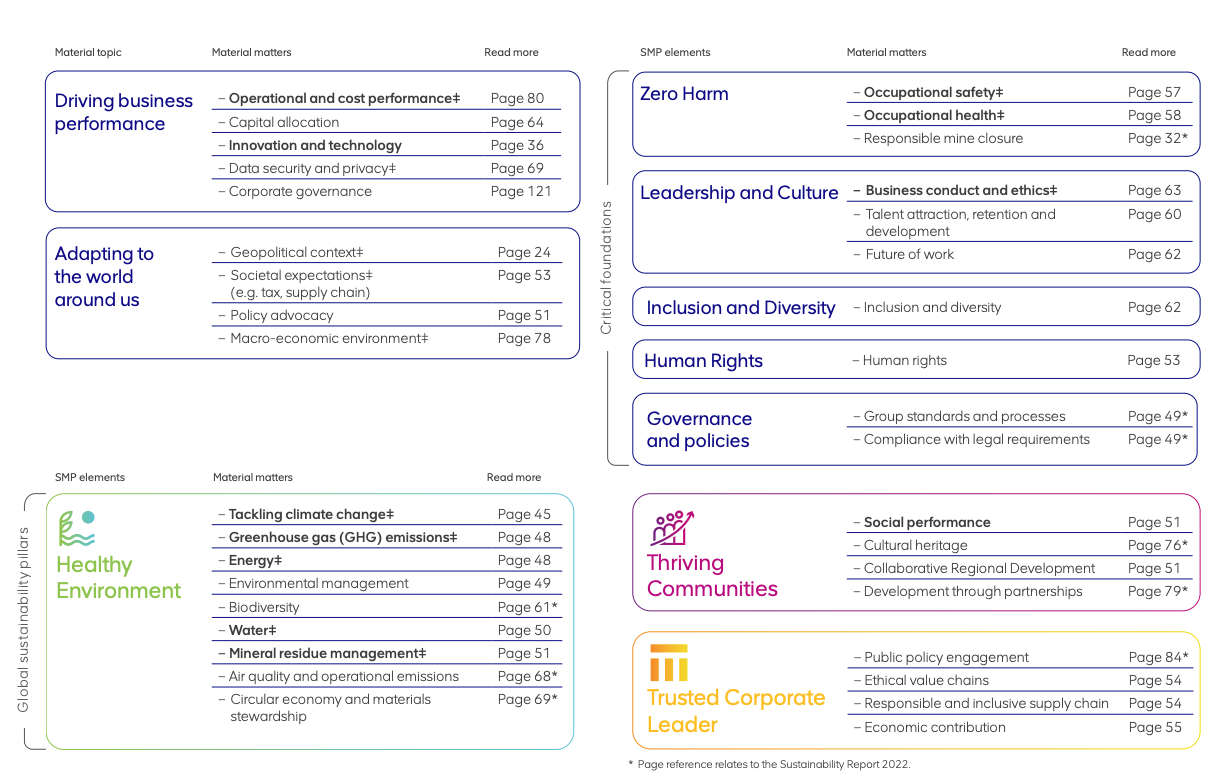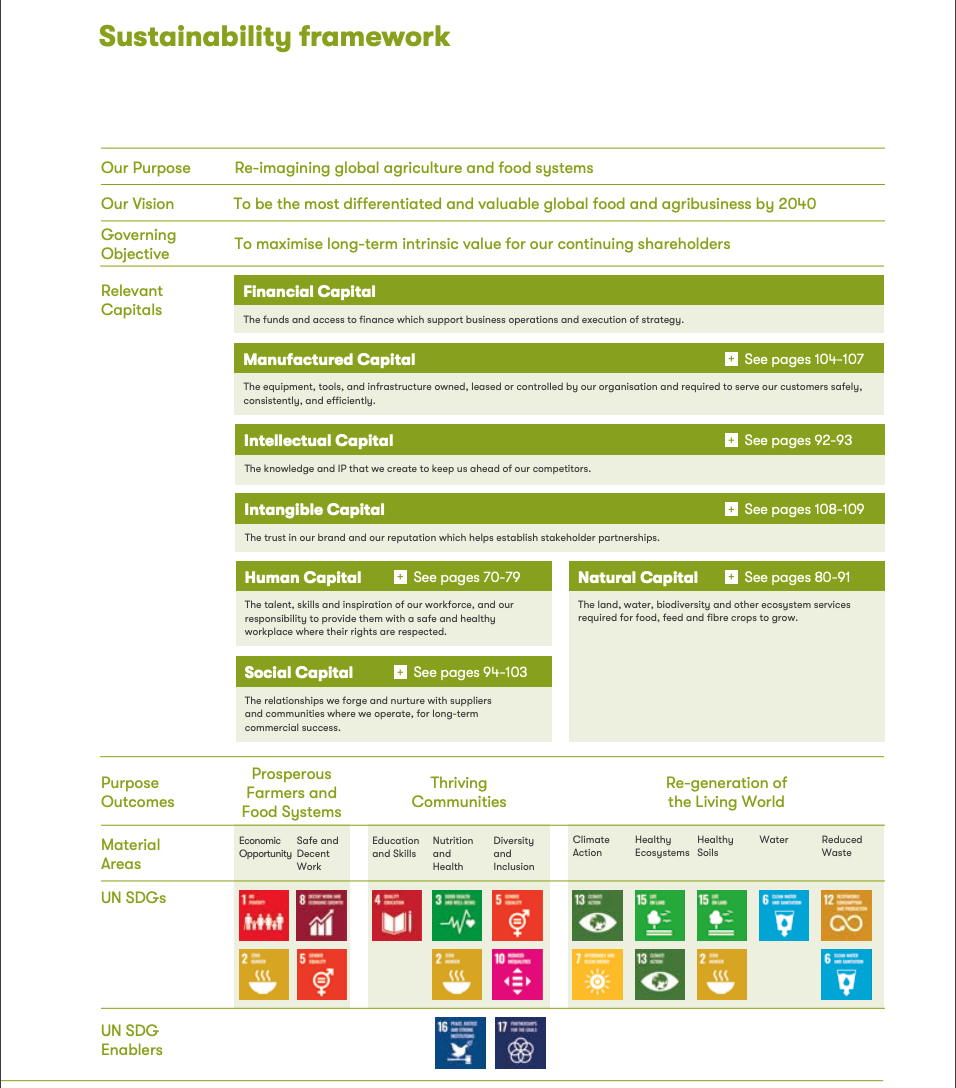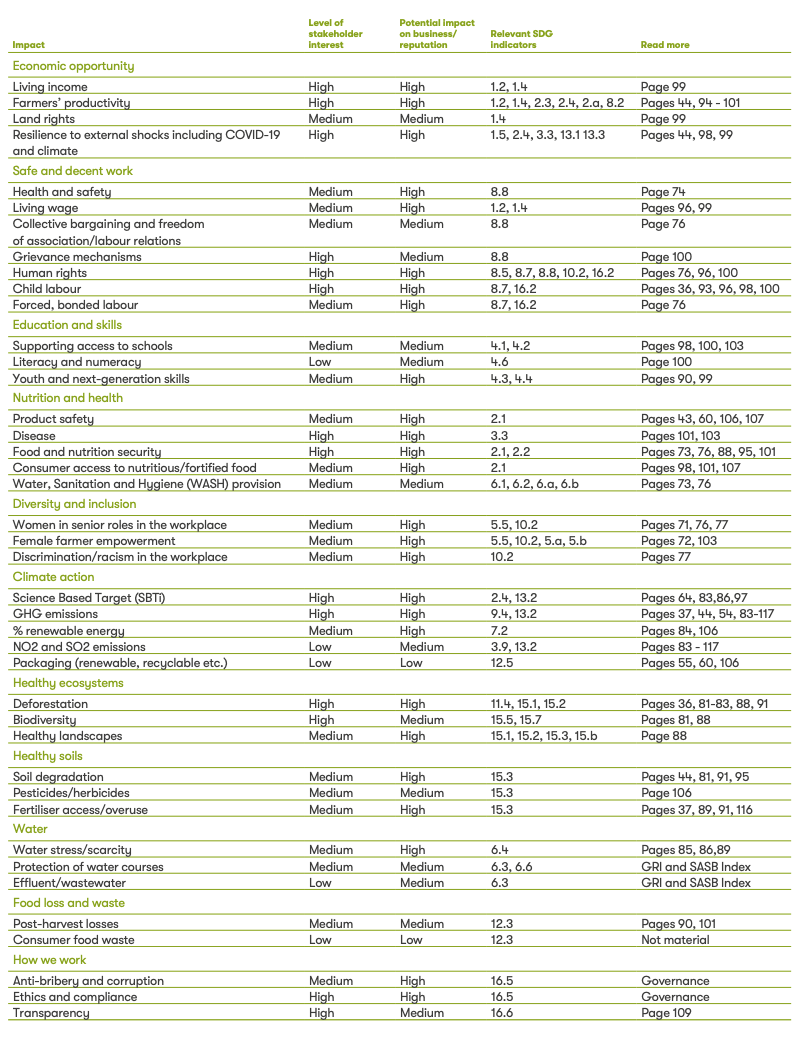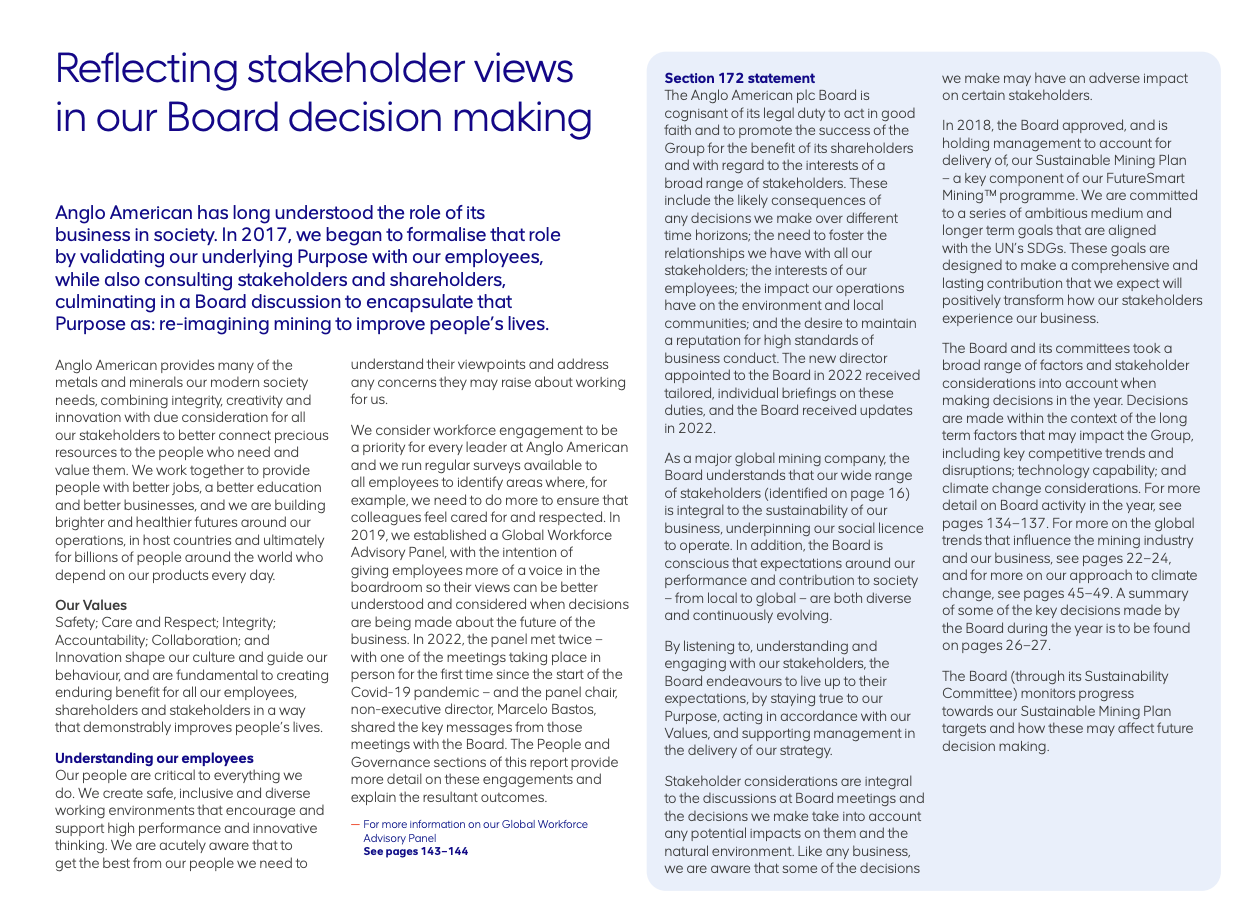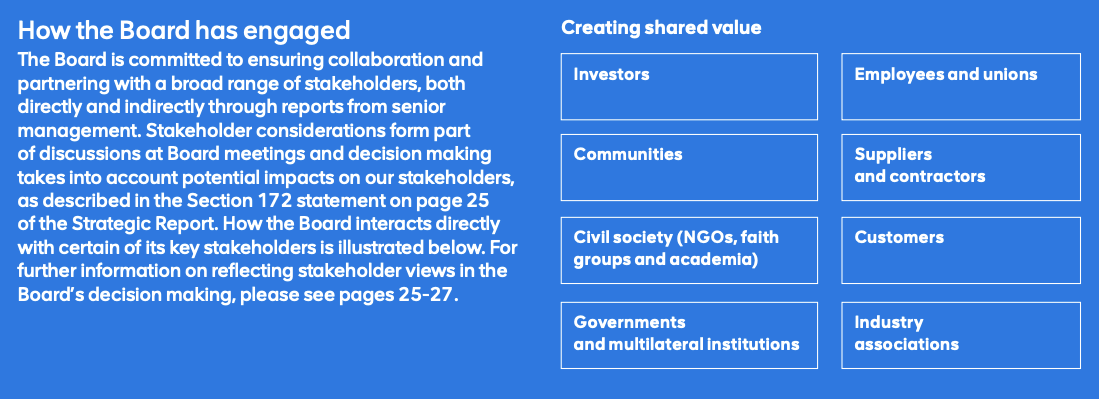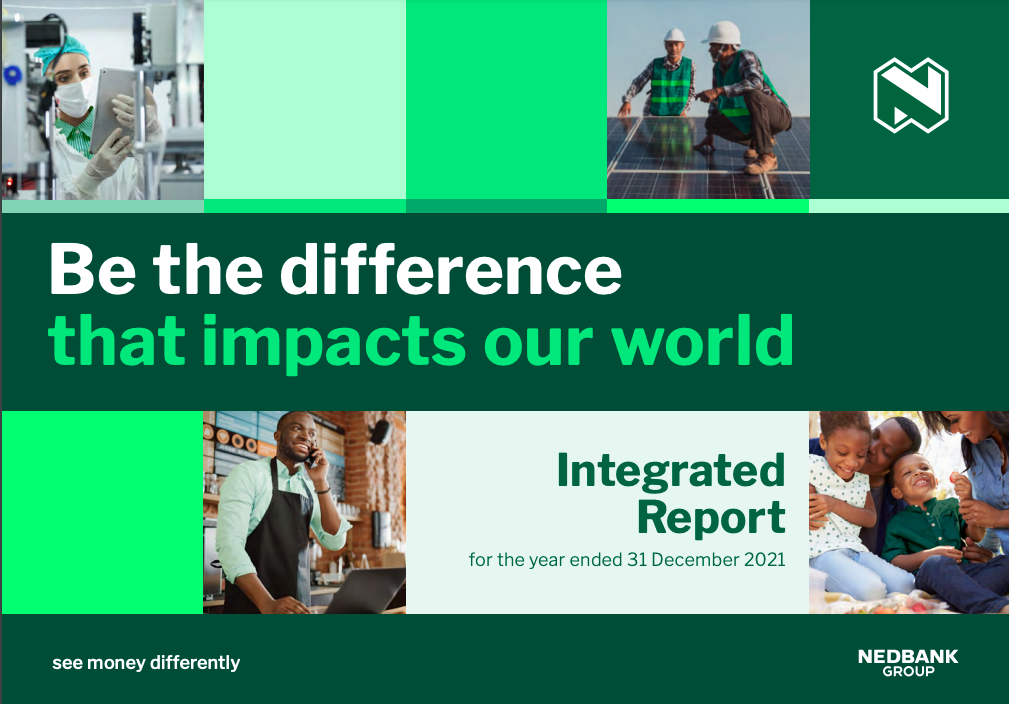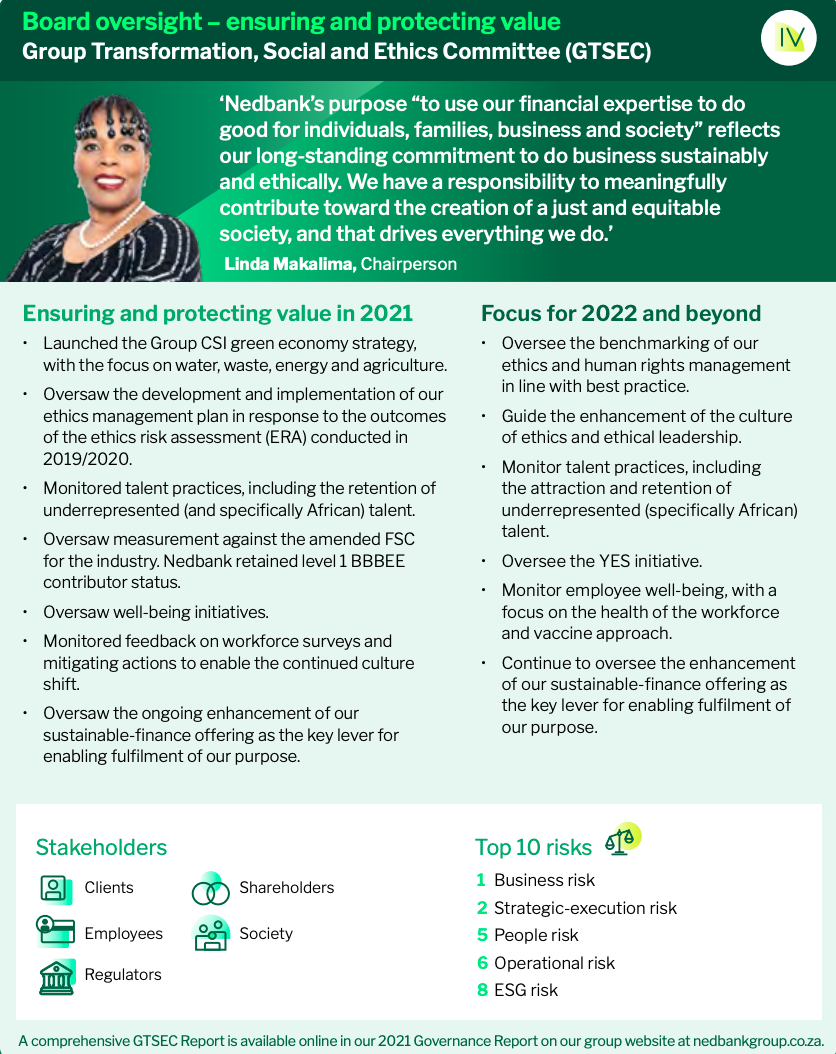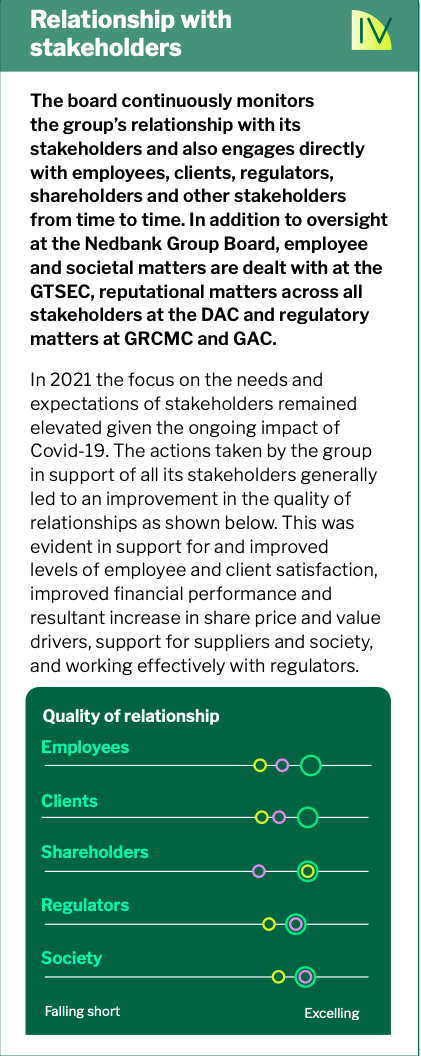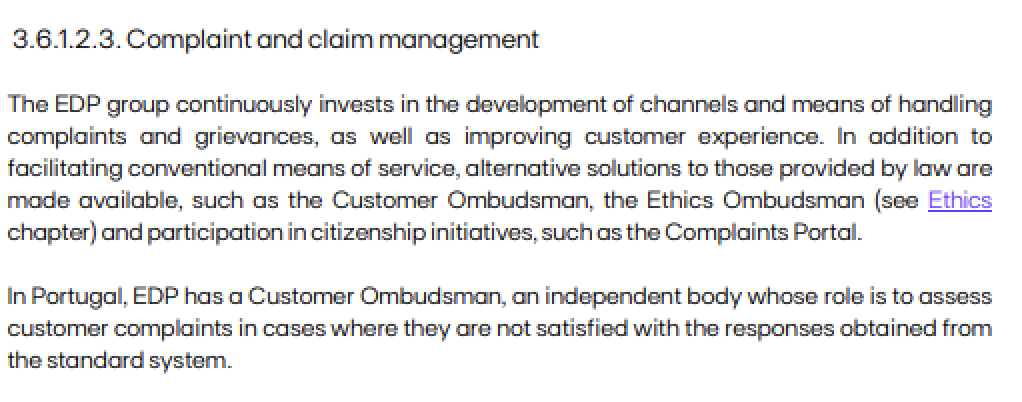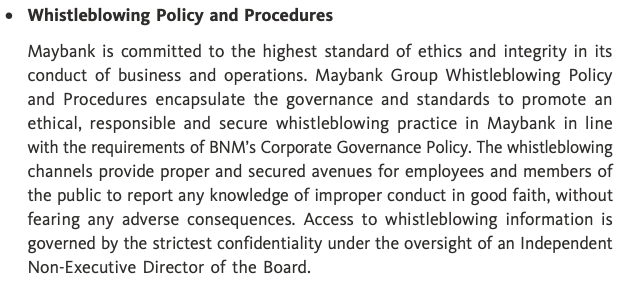Commitment, Policy, and Strategy
Describe the policy and strategy for stakeholder engagement at the board and management levels, including identification, approach for priority groups, and grievance mechanisms.
Governance and Management
Describe the board’s oversight role in considering stakeholder interests when making decisions on effectiveness of stakeholder engagement, including dialogues and grievance mechanisms.
Stakeholder Identification
Describe constituencies identified as key company stakeholders and the process of identifying material stakeholders.
Communication and Grievance
Describe mechanisms to ensure that stakeholders receive relevant information to address their interests and concerns and to respond to stakeholders’ complaints, including grievance and whistleblowing mechanisms for external and internal stakeholders.
Learn more: IFC’s Corporate Governance Matrix – Governance of Stakeholder Engagement
Companies and the business ecosystem have been evolving recently to focus on the company’s purpose to create value for a broader mix of stakeholders and move away from the focus on profit for shareholders. In so doing, boards and management should engage and communicate with their stakeholders, prioritizing key, relevant stakeholders and their interests and report on those. Some jurisdictions have regulated stakeholder relations in company governance, and others have voluntary disclosure regimes. For example, many US companies recognize the need for transparency and company commitment to sustainability, including broader stakeholder engagement, without being mandated by law. Companies often follow the Sustainability Accounting Standards Board voluntary framework, now part of the IFRS Foundation International Sustainability Standards Board and other frameworks such as the Global Reporting Initiative and the Task Force on Climate-Related Financial Disclosures for climate disclosures.
The European Union, in pursuing its new growth strategy, the Green Deal, passed the Corporate Reporting Sustainability Directive, which applies to larger companies in the union and their supply chains in financial year 2024 for reports issued in 2025. The directive requires application of the European Sustainability Reporting Standards (ESRS). ESRS 2, General Disclosures, and its related disclosure requirement related to Strategy, require including a discussion on stakeholders’ interests and views, including how they are taken into account when considering the company’s business model and strategy, how the company prioritizes and engages with key stakeholders, and how the board and management understand and respond to stakeholders’ interests and views.
Governance of Stakeholder Engagement
Companies recognize that their stakeholders—workers, customers, regulators, locally affected communities, local and international nongovernmental organizations, civil society organization, contracted workers, primary supply-chain workers, neighboring projects and society at large—are vital to company success in the long term, and that stakeholders can be directly affected by companies’ performance, products and services, and activities. Thus, it’s important to engage with stakeholders to understand and respond to their needs and concerns in order to identify the material issues for the long-term success and resilience of the company.
The board should oversee and facilitate stakeholder communication and engagement and ensure that proper policies and mechanisms are in place, including stakeholder mapping, engagement policy, and grievance mechanisms.
The report describes the policy and strategy for stakeholder engagement, including:
- Stakeholder identification
- Stakeholder analysis to identify the needs and interests of diverse stakeholders
- Method of determining materiality issues and topics of priority groups and explanation of the differentiated approaches for prioritized groups
- Explanation of how stakeholders’ interests and views are taken into account when the board discusses the business model and strategy
- Iterative disclosure and consultation to increase the strength of stakeholder relationships
- Management of stakeholder expectations
- Grievance mechanisms and reporting
- Management-level mechanisms to raise and resolve persistent stakeholder issues
International Good Practice
Stakeholder engagement builds into board responsibilities, agendas, and decisions.
The company’s stakeholder engagement commitment and policy should be transparent and visible to staff, contractors, suppliers, regulators, and collaborators through a publicly disclosed code of conduct.
Stakeholder engagement can be extended to suppliers and contractors through policies or tender requirements.
The report describes constituencies that the company has identified as key stakeholders and the issues associated with each category of stakeholders. It also describes the process of identifying material stakeholders, including a formal stakeholder mapping process.
International Good Practice
- Expand the definition of stakeholders to include contracted workers, primary supply chain workers, neighboring projects, and international nongovernmental organizations and civil society organizations.
- A senior executive should be responsible for stakeholder relationships and should ensure integration with strategy and target setting.
Who Are Stakeholders?
Based on the size and impact of the company, stakeholders typically include the following:
- Local communities directly affected by the company
- Customers
- Regulators
- Workers, contractors, and primary supply chain workers
- Neighboring projects
- Communities in which the company has operations
- International nongovernmental organizations and civil society organizations
The report describes who among employees and executives is responsible for stakeholder engagement and the board’s role in overseeing stakeholder engagement, including the effectiveness of company dialogue with key stakeholders and grievance mechanisms. Grievance mechanisms should include assurance that there will not be retaliation for filing a grievance, usually called no retaliation clauses and ensure that the number of grievances reflects actual incidents.
International Good Practice
- Governance structures should incorporate recognition of stakeholders.
- Stakeholder engagement policies and procedures should be integrated into board and management decisions, company operations, and requirements for contractors and primary suppliers.
- Management should analyze trends and root causes of stakeholder grievances.
The report describes company responses to stakeholder interests and the mechanisms in place to respond to stakeholders’ questions or complaints in a timely way, including grievance and whistleblowing mechanisms for both external and internal stakeholders.
It also describes the types of complaints received and outstanding matters. It can be useful to have key performance indicators on the number of complaints and how many were resolved.
International Good Practice
- Stakeholder engagement should follow internationally recognized standards (AccountAbility’s AA1000 Series of Standards or the International Organization for Standardization’s ISO 26000: Guidance on Social Responsibility).
- Communication should be in an understandable format and language.
- Issues raised by workers should be resolved with a worker representative.

